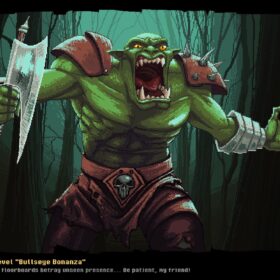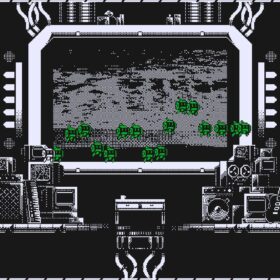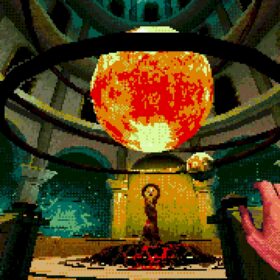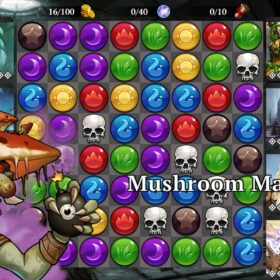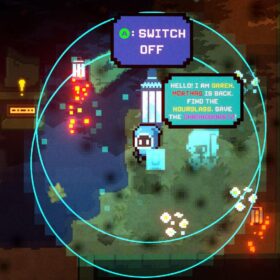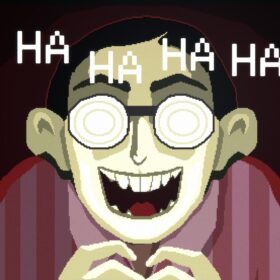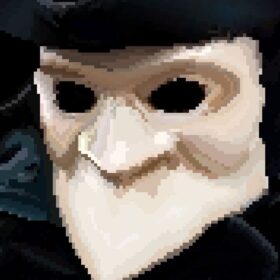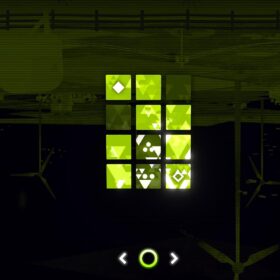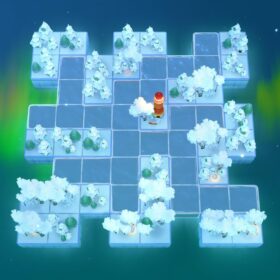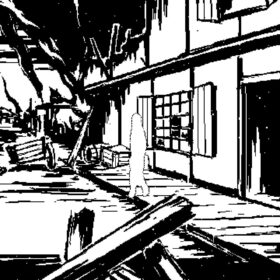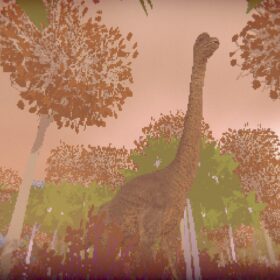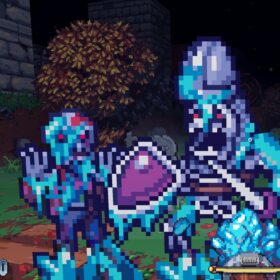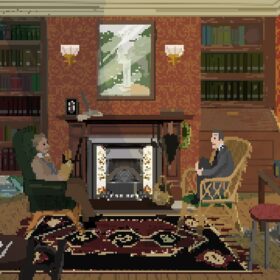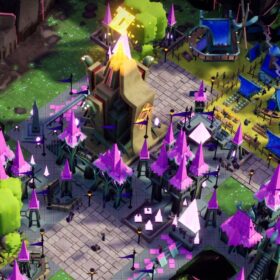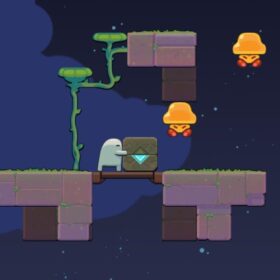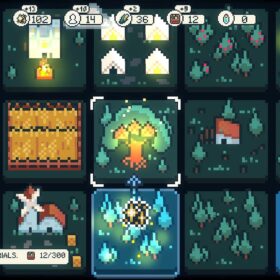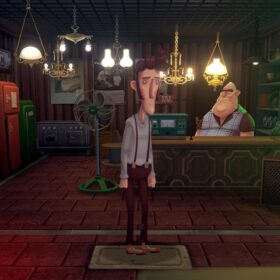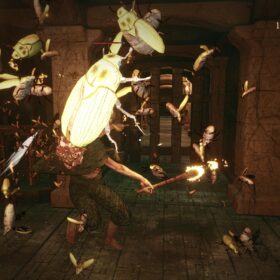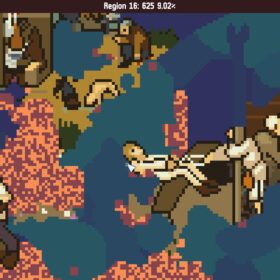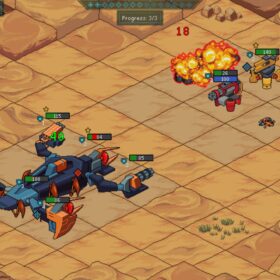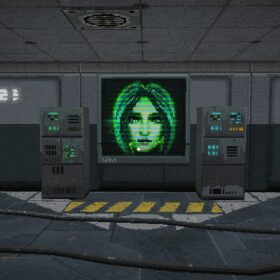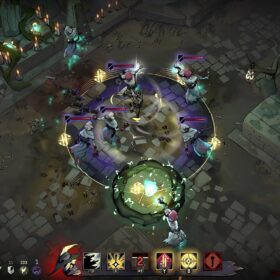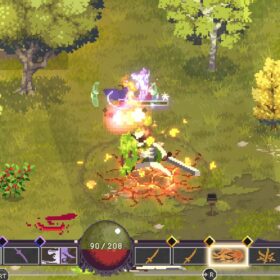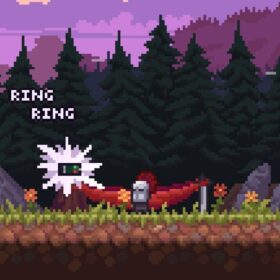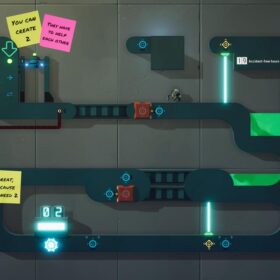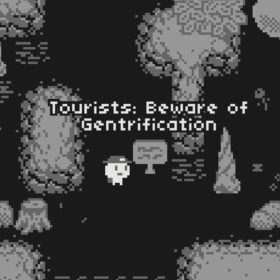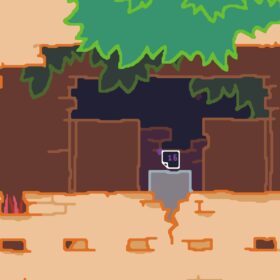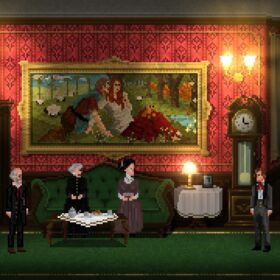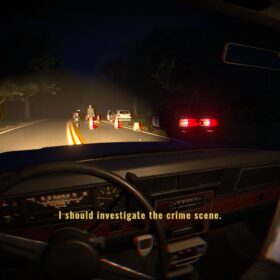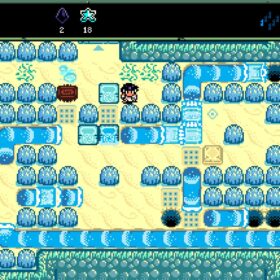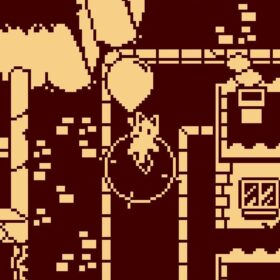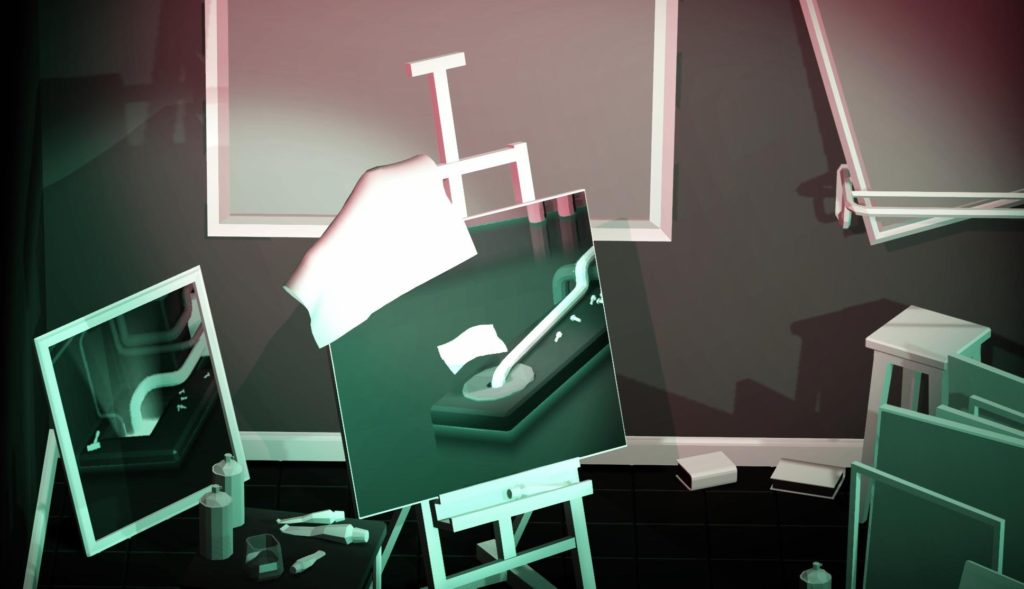
PC
Hadr is a game about magic, and a game that feels like magic. It’s about that extraordinary moment in a magic act where the magician covers the item with his silk, and then right before your eyes it appears to melt away, completely vanish, leaving the cloth to fall to the floor.
You control a large cloth (or cloths), and aim to drape them over the objects in each level until they are completely concealed – at which point they magically disappear. And it is unrelentingly satisfying to do so.
This is all about cloth physics, really. Ideally using a controller (the isometric angle makes WASD a little more awkward to use), you can raise the cloth in the air and move it about. But being a light piece of material, it will fold, ripple and roll over itself, meaning a lot of it is about manipulating the physics such as the cloth lands exactly where you want it to be. The reward, the mystical vanishing of the boxes, cages, photo frames, suitcases, bricks and bunny rabbits that you hide, makes every moment of it worth it.
As you progress the tasks become more complicated, and it introduces some gentle puzzles to the mix. Eventually over the couple of hours this lasts you’ll be in control of three different cloths, switching between them, coordinating them to conceal larger items. Or juggling between two to escape a rapidly flooding room. Or involved in some peculiar meta-world of realities within paintings…

I really enjoyed this. There are some issues, some glitches as you might expect with a physics-led game. Occasionally a cloth will poke a corner through itself, which can be tricky to unhook, and more often cloths with get stuck to objects requiring you to “tug” them away. It’s also hard not to imagine a larger more complicated version of the game as you’re playing. It seems so ripe to borrow from Katamari and Donut County, the cloths getting larger as they consume, letting you disappear ever-bigger items in a location.
Its minimalist presentation works really well, levels tending to be greyscale with occasional single colours added. This is especially fun when you can eliminate the sources of light as you go. And the music by Jan Tomas is just sublime. It strongly reminded me of The Album Leaf, which is no small compliment. Sound design deserves a nod too, the way ambient audio cues let you know an object is covered just as it fades from existence.

The cloths end up feeling so splendidly malevolent. It’s tempting to compare them to ethereal ghosts, but it’s not quite accurate – the movement is more marine, gliding and slithering like a ray. There’s something distinctly sinister about it, despite its ostensibly being an innocuous physics game.
For under £4 you’re getting a solid couple of hours, especially if you’ve the sense to take your time and challenge yourself to evaporate as much as possible in every level. Plus it’s incredibly hard not to just start over again the moment you’ve finished, the mechanic never growing tired no matter how much it repeats.

I’d love to see this embellished further, because the team behind it clearly have a lot of smart ideas of how it can be applied. The occasional glitchiness is completely forgivable given the intense satisfaction of success. Highly recommended.
- Dominik Konečný, Ateliér Duchů
- Itch, Steam, Indie DB
- £3.40/€3.40/$4.20
- Official Site
All Buried Treasure articles are funded by Patreon backers. If you want to see more reviews of great indie games, please consider backing this project.



